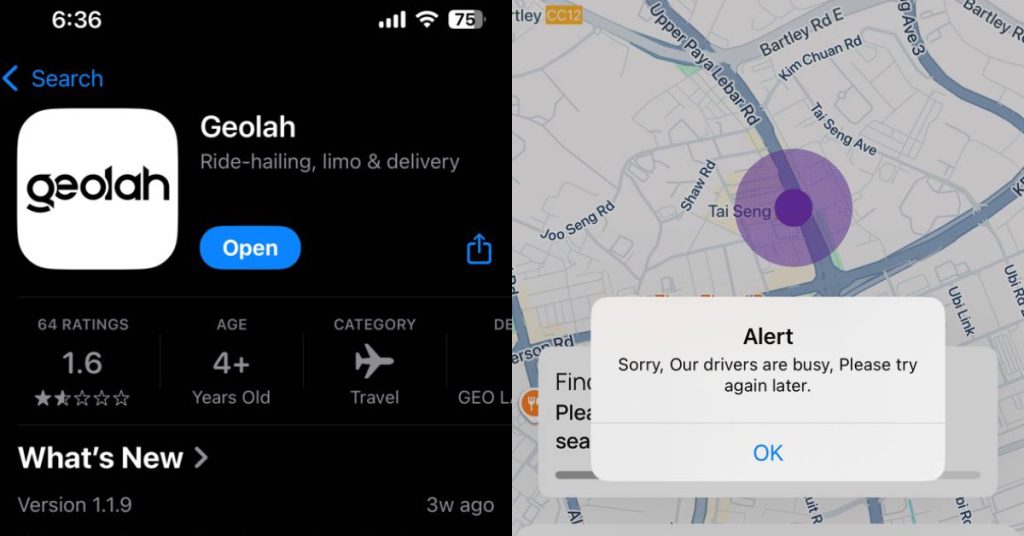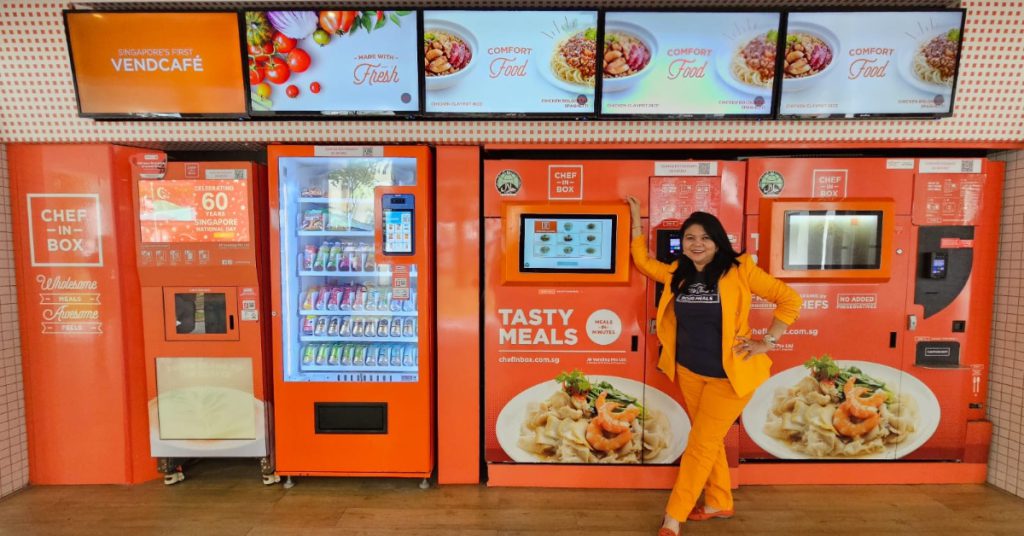Homegrown gaming tech company Razer announced last Friday that it will be discontinuing its e-wallet service Razer Pay and Razer Card.
All Razer Card beta users will not be able to use the card and payment functionalities from 31 August 2021.
Additionally, Razer Pay’s beta will end on 30 September 2021, after which, all wallet top-up, payment and transfer features will no longer be made available. The Razer Pay app will also be inaccessible from 1 October 2021.
This discontinuation comes as quite a shock, as Razer’s e-payment venture is quite short-lived. Razer Pay launched in Singapore for beta testing in March 2019 (it launched in Malaysia first six months prior), while Razer Card launched in Singapore for beta testing in October 2020.
So what exactly led to the downfall of Razer Pay and Card in just about two years?
Does it appeal to “youth and millennials”?

According to Razer, Razer Pay is an e-wallet app “designed for youth and millennials,” which also makes up their target gaming consumer segment.
With Razer Pay, you can go cashless with an e-wallet that lets you make payment to merchants across the region. You can basically “pay everywhere, transfer funds quickly, and top up cash easily with a single dedicated app,” said Razer.
Razer Card, on the other hand, is the first-ever prepaid card under the Razer brand. All Razer cardholders get to enjoy year-long cashback features for online and physical purchases.
You can use the Razer Card to spend your Razer Pay e-wallet balance at any merchant that accepts VISA, earn rewards and cashback, and track your spending via the Razer Pay app.
You can also use Razer Card to pay for transit rides and pay for purchases overseas with Razer Pay balance, which apparently offers “one of the most competitive exchange rates”.
Users can receive one per cent for purchases made across categories, or up to five per cent on RazerStore and Gold purchases. There is no minimum spend and no capped limit for cashback.
There is also a gamified rewards system on the Razer Pay app. Unlike traditional cards’ loyalty programmes, users can complete tasks, level up, and stand to redeem up to S$2,000 worth of Razer gear and free card upgrades.
The Razer Card benefits are actually quite average, and there’s nothing significant that can help convert users, particularly youths and millennials.
For instance, there are no cashback benefits at F&B and/or entertainment outlets. The one per cent cashback is also a lot less than what other credit cards are offering.
| Razer Card | 1% cashback for all spend, up to 5% on RazerStore and Gold purchases |
| Citi SMRT Card | 4.7% cashback for groceries and food |
| HSBC Advance | 1.5% cashback on all local spend, up to 3.5% cashback with min spend of $2,000 |
| AMEX True Cashback | 3% cashback first 6 months, then 1.5% on all local spend |
| CIMB World | 1.5% to 2% cashback on all local spend |
| SCB Unlimited | 1.5% cashback on all local spend |
Instead, the Razer Card appeals more to Razer fans due to the increased cashback and rewards for Razer products. It is also not surprising that Razer fans see the card as a physical symbol of their allegiance towards the brand.

Additionally, we also can’t deny the fact that the Razer Card actually looks good with a minimalist, matte-black aesthetic. The upgraded Standard card in particular, is the world’s first card that lights up on payment.
Razer Pay was “one of the largest e-wallets in Malaysia”
When Prime Minister Lee Hsien Loong tweeted about the need for a single e-payment system in Singapore during his 2017 National Day Rally speech, Razer CEO and co-founder Min-Liang Tan gamely took him on.
PM Lee had lamented that while Singapore do have e-payments in place, there are “too many schemes and systems (that make it) inconvenient for consumers and costly for businesses.”
Tan then responded to his tweet, saying that he can get such an “e-payment system rolled out nationwide in 18 months.”

PM Lee then urged him to submit a proposal, which he will study seriously.
And exactly 14 days later, on 7 September 2017, Tan made true on his word and released a snippet of the proposal.
His solution is two-pronged. The first is to provide “ongoing feedback, development and advisory support for a Common E-Payment Framework (CEF)”.
The second is to “spearhead support for an e-payment solution” — either for an existing system such as Alipay, or its new RazerPay.
Razer Pay would essentially be a cloud-based e-wallet using existing Razer Pay technologies, and can take on different forms from a Stored Value Facilities (SVF) card (like an EZ-link) to a mobile wallet app and more.
In order to achieve this, Razer announced its commitment to invest S$10 million as a seed funding for the RazerPay initiative and intended to roll out Razer Pay within 18 months (deadline 1 May 2019) with at least one million e-wallets signed up.

“We believe [Singapore] will be a phenomenal springboard for the rest of the region’s e-payment evolution,” said Tan.
“To this end, we envisage Singaporeans being able to travel to various countries with SEA and use their e-wallets seamlessly. Imagine not just a cashless Singapore but a cashless world for Singaporeans.”
While Razer strongly harped on its “For Singaporeans, by Singaporeans” vision with an ambition for the e-payment advisory board to be 100 per cent Singaporeans and sought support from the local government, it actually launched Razer Pay in Malaysia first as part of a joint partnership with Berjaya Corporation Berhad.
Within just eight days after launch, Razer Pay acquired over 600,000 sign-ups with 300,000 transactions, on top of being the top free app on both Apple App Store and Google Play Store in Malaysia.
Razer Pay is also accepted as a payment mode online and at over 6,000 major retail and F&B outlets in Malaysia, including Starbucks and 7-Eleven.

According to the company’s investor presentation interim results 2018, Razer revealed that Razer Pay “handled over US$728 million of total payment value” for the first half of the year.
Then in 2019, Tan said that “Razer Pay is already one of the largest e-wallets in Malaysia and we plan to provide for inter-operability across the border to Singapore in the future.”
Different factors contributed to its downfall
In Singapore, Razer Pay faces strong competition from other players. There are a multitude of e-wallet options here, which generally fall into three categories: bank-owned wallets, non-bank wallets, and multi-currency mobile wallet (such as YouTrip and Revolut).

According to a study by iPrice Group and App Annie Intelligence, the top e-wallet app in Singapore was GrabPay.
Since the fourth quarter of 2017, GrabPay has been dubbed the most commonly used e-wallet app in Singapore. In fact, data by App Annie revealed that Grab consistently obtained the highest monthly active users from 2017 to 2019.
According to Grab’s social impact report, 77 per cent of overall transactions on Grab’s platform was conducted via GrabPay.
Meanwhile, DBS PayLah! app was ranked the second most actively used e-wallet app in Singapore, while Fave — one of the pioneers in the digital payment app sector — was ranked third.
As Singapore pushes forward with cashless payments as a key part of its Smart Nation vision, the local e-wallet landscape has become more saturated as players vie for a slice of the pie, leaving little to no room for new entrants. This makes it harder for Razer Pay to capture market share, which is already dominated by superapp Grab.
Furthermore, Razer Pay sees low usage in Singapore because its e-wallet is not accepted at most, if not all, major merchants.
In March 2019, Razer had named mobile payment company FOMO Pay as its official merchant acquirer.
FOMO Pay, which provides merchants with the technology to accept payment from multiple e-wallets with a single QR code, will accept Razer Pay on its network of 4,000 payment points in Singapore, while helping to add more merchants to the platform.
There’s no information on the entire list of partnering merchants in Singapore, but some of them include Dunkin’ Donuts and Buzz convenience stores.
Meanwhile, GrabPay has onboarded over 4,000 merchants in Singapore, spanning across F&B outlets, fashion retailers, specialised services and more. This includes BreadTalk, LiHo, Subway, Decathlon and Innisfree.
To add on, there is no actual incentive for Razer Pay users to actively use the e-wallet. For GrabPay, users are rewarded with GrabRewards Points, which can be redeemed for vouchers from GrabRewards catalogue or to offset payment for deliveries and in-store purchases.
In contrast, Razer has not done much to push the adoption of Razer Pay. One instance however, is Razer’s national giveaway of five million masks for Singapore residents aged 16 and above.

Those who would like to redeem the masks would have to use Razer Pay to verify their identity. The move met with some public criticism, with Tan defending that “it’s not a ploy to get user base.” He further justified the use of Razer Pay as necessary for preventing fraudulent claims of free masks.
Best to fail fast and move on
At the end of the day, it’s definitely a tough choice for Tan to decide to pull the plug at the end of the beta period.
Particularly, its Razer Card has 1,337 beta users and with the “valuable feedback” that these users have provided to Razer, the company said that it looks forward to “innovating the product further for the future.”
It’s unclear if this means Razer will make a comeback with a better product, but what’s clear is that for now, Razer knows it has failed, and they fail fast to move on.
There’s really no point in pumping in more money to scale a venture that has failed to take off.
Razer’s failure to capture its target “youth and millennials” consumer segment, unattractive cashback benefits, stiff competition from other e-wallet players, lack of major merchants, as well as lack of incentive to use their e-payment services are just some of the key factors that has contributed to the sudden shutdown of Razer Pay and Razer Card.

In its latest financial report for FY2020, Razer announced that it has crossed US$1 billion in revenue and turned profitable.
It is also a cash-rich company, with over US$500 million in its bank. With so much cash on hand, Razer can afford to experiment and dabble in new ventures in an effort to achieve both profitability and growth.
For now, Razer has confirmed that it will be focusing on its B2B business and it’s not giving up on its plan to roll out Razer Youth Bank, despite its failure to win the bid for a digital banking license in Singapore.
Instead, it will be targeting millennials in countries such as Malaysia and the Philippines. Razer Fintech CEO also said that they are also looking at other markets like Europe, the Middle East or Latin America, where regulators are more supportive.
On that note, it’s likely that the gaming giant will continue to grow its financial presence worldwide as it reduces its reliance on revenue from hardware peripherals.
Featured Image Credit: Razer










